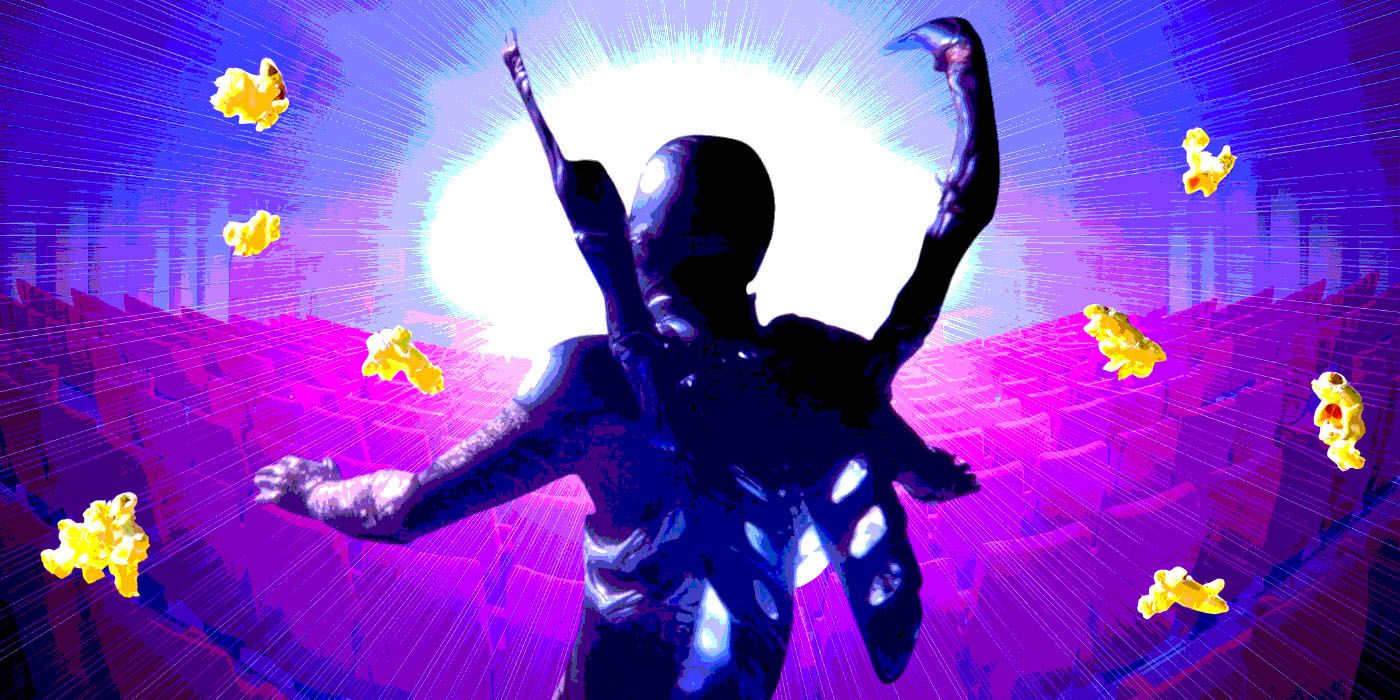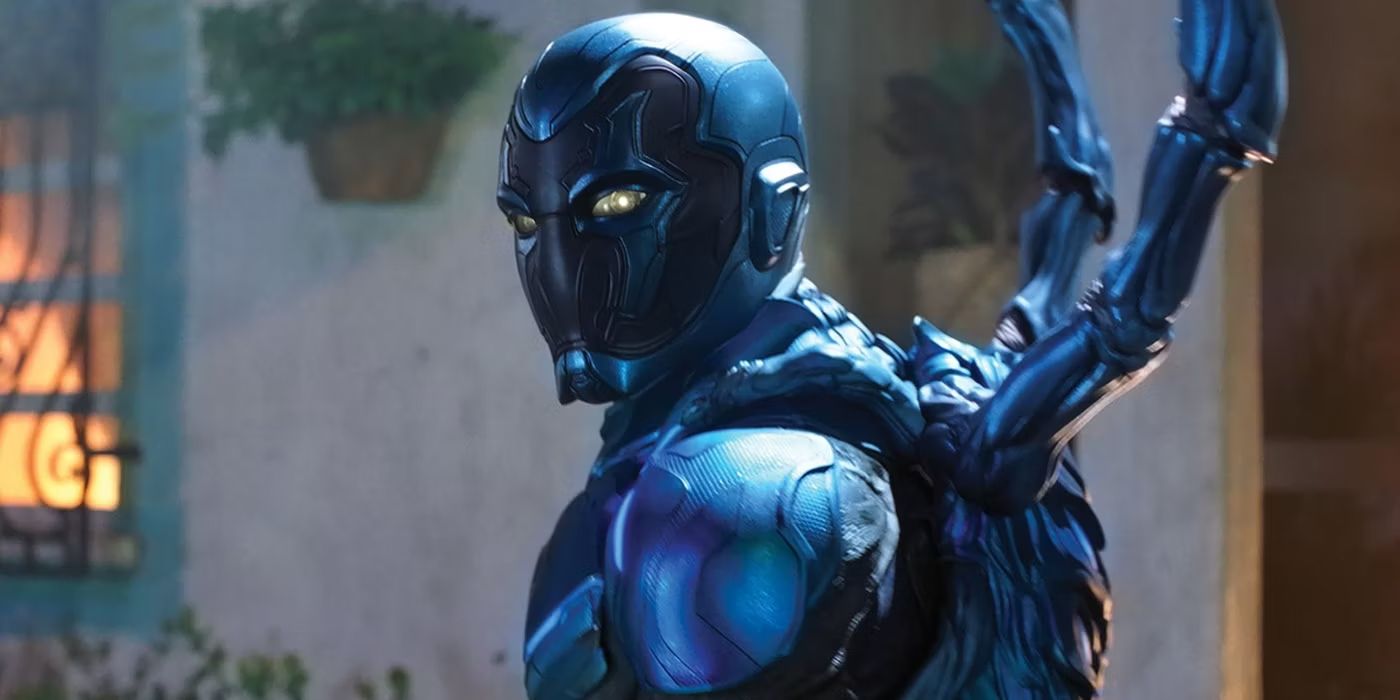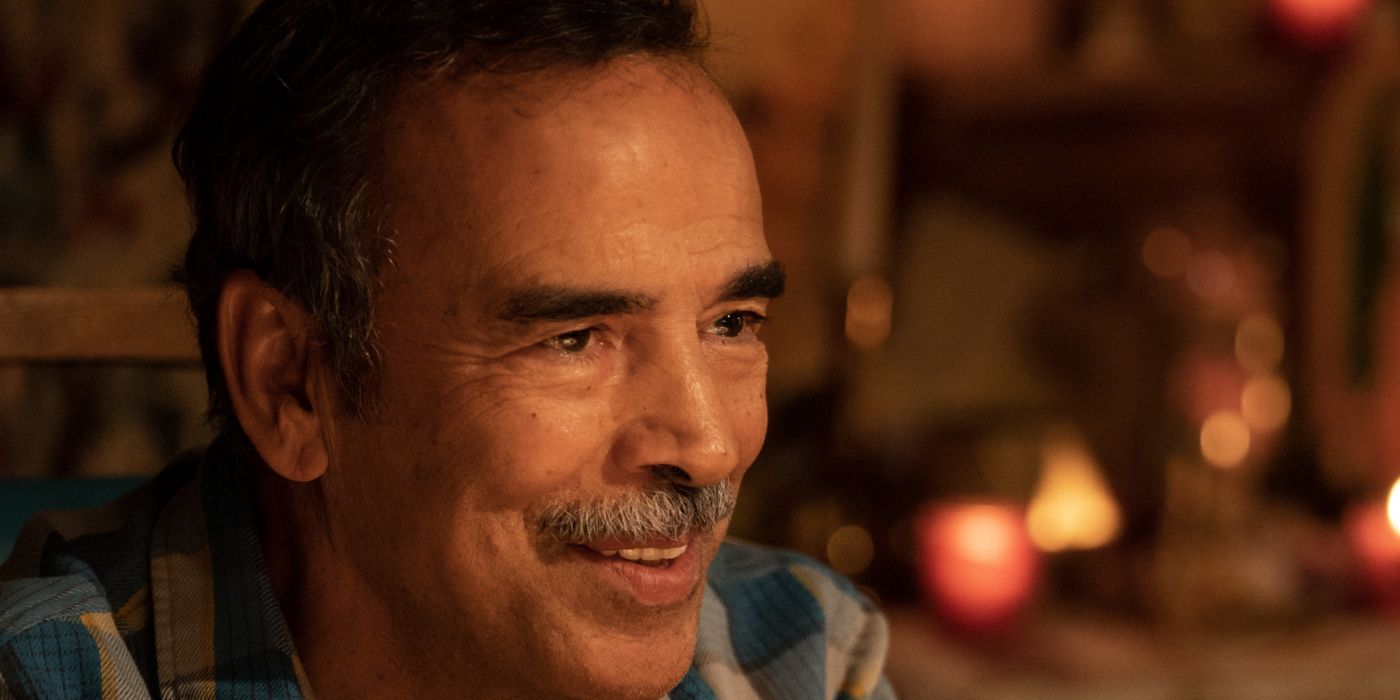The Big Picture
- Director Ángel Manuel Soto pays homage to the Mexican supernatural classic film Macario in Blue Beetle, celebrating both the country's artistic achievements and darker past.
- The film's crucial scene, featuring the death of the lovable patriarch, draws inspiration from Macario, incorporating its iconic shot of flickering candles symbolizing lifespans.
- By referencing a lesser-known Mexican classic, Blue Beetle elevates the superhero genre while shedding light on the importance of accepting hardships, particularly death.
Director Ángel Manuel Soto’s Blue Beetle gave us the premiere of cinema’s first solo Latin-American superhero and his ridiculously loveable family. The superhero movie charmed its way into the hearts of many through its unwavering respect for its heritage, something commented upon directly through its homage to the Mexican supernatural classic Macario. The homage occurs during Blue Beetle’s most crucial scene but is actually hinted at prior to the eagle-eyed viewers who would have spotted Nana (Adriana Barraza) watching the film on television during the film’s first act. For repeat viewings, just keep an eye on the moment during Nana’s channel surfing when one of the images shows a man walking into a cavern overridden with burning candles. If that doesn’t ring any bells don’t worry, we’ve got you covered!
This 1960 black-and-white supernatural morality fable is a classic of Mexican cinema, becoming the first Mexican film to be nominated for the Academy Award for Best Foreign Language Film. Adapted from “The Third Guest,” a short story by B. Travern (who also wrote The Treasure of the Sierra Madre, the film adaptation of which would bag two generations of Hustons the Oscar), the film follows the struggling impoverished woodchopper Macario as, his spirit broken by his constant hunger and his need to provide for his family, announces that he will not eat until he can realize his dream of eating a whole turkey on his own. It’s not a lot to ask for… but dreams unfortunately have consequences.
The Plot of ‘Macario’ Is a Morality Tale of Biblical Proportions
After his worried wife steals a turkey for him to carry to the mountains and eat, Macario is visited by three strangers: the Devil, God, and Death himself. While they are never explicitly stated to be the holy beings they represent, Macario can instantly recognize them through their demands, as all offer Macario something different in exchange for a piece of his Turkey. Framed within the context of the Day of the Dead, the film acts like Coco meets A Christmas Carol, as Macario interacts with each figure differently. The Devil offers him material goods in exchange for a piece of his turkey, which Macario can immediately see through. When the Devil offers him gold, Macario states that they’ll cut off his hands as a thief upon his return. When he offers the entire forest, Macario states that it’s a false promise, as he’ll still have to venture into the woods every day to chop wood by hand. The Devil is defeated. Onto God.
God, conversely, begs for Macario to help him, though Macario can see that God’s only interest is for Macario to perform a good deed. He who owns everything that exists is of course able to procure themselves a turkey on their own. Therefore, he rejects God and finally encounters Death in the form of a starving peasant. Macario instantly offers half of the turkey to Death, later justifying his action by stating that when he saw Death, he thought that he was going to die and that splitting the turkey with him would at least afford him the time to eat before passing. Death is amused by Macario’s company and story, rewarding him with a magical elixir that’ll heal any ailment. However, it comes with a catch. Every time Macario uses the elixir, he will either see Death at the foot of the victim’s bed (signaling that he permits the victim’s healing) or the head of the bed (signaling that his life is meant to pass). Golly, with good old Death involved, what could go wrong?
How Does ‘Blue Beetle’ Homage 'Macario'?
Back to 2023 for a moment, while the echoes of Macario within Blue Beetle may not be all that apparent at first glance, one has to take note of the several ways that Soto confronts the abusive history between the United States and Latin America, all in the context of a candy-colored family-friendly superhero origin story. Take the scene directly after the climactic fight between the titular Blue Beetle (Xolo Maridueña in a star-making performance as Jaime Reyes) and Ignacio Carapax (AKA: OMAC, short for One Man Army Corps, played by Raoul Max Trujillo), in which the Scarab shows Jaime his enemy’s memories. A flashback begins detailing Carapax’s upbringing as a child soldier adopted as a human weapon by Susan Sarandon’s Victoria Kord.
That scene, alongside the marginalized treatment of Jaime’s family at the hands of the militant corporation further gentrifying their neighborhood every day, showcases Blue Beetle’s willingness to champion its history by embracing its darker roots. However, that doesn’t mean that the film didn’t celebrate its heritage and comment on its previous artistic achievements as much as it did its darker past. In an interview with MovieMaker Magazine, Soto reveals the importance of paying homage to the religion of his people and their enlightened relationship with Death in the film’s most crucial scene, leading to the incorporation of Macario’s most iconic shot.
'Blue Beetle's Crucial Scene Wasn’t Even in the Original Script!
Blue Beetle’s homage to Macario was born out of necessity when writer Gareth Dunnet-Alcocer was pushed by DC Studios to kill off the Reyes family father figure Alberto (Damián Alcázar). According to Soto, the question they fought to answer was “what is that push that this reluctant hero needs at the end of the day for him to embrace his destiny?” The answer would of course be the death of the lovable patriarch who, after his fatal heart attack, Jaime sees again in his vision of the afterlife. This vision is brought on by Jaime’s torture after he’s rendered unconscious by Victoria Kord’s attempts to purge the Scarab from his body. However, the Reyes family’s version of the afterlife doesn’t consist of divine white lights and fluffy clouds.
Instead, as stated in the interview above, Soto looked to the aforementioned Mexican classic, stating that “The magic realism of Macario stuck with me. When we were developing that scene, I was like, ‘Man, why don’t we pay homage to the movie that built us? Why don’t we pay homage to the movie that we can say is Latin cinema?’” This is why, for Alberto’s final appearance, the filmmakers opted to shoot him in front of thousands of flickering candles, the same setting seen during Nana’s earlier viewing of the film which acts as the moment Macario winds up in Death’s cavern. Every candle, Death explains, is representative of a person’s lifespan. Once the wax of the candle disappears, it is time to let go. It’s that willingness to let go that allows Jaime to ultimately triumph, the same willingness Macario himself wasn’t able to embrace.
That is of course because Macario, for all of its musings on poverty and religious corruption, is fundamentally about the necessity of accepting certain hardships, namely death, in true Day of the Dead-fashion. Macario’s journey began from the refusal of his hardships and his passivity in regard to his miracle-gift is what allows him to become so exploited in the latter half of the film. Death’s decree, after all, is final, a notion that Blue Beetle took as seriously as its love for the family at its center.
It’s safe to say that hardly anyone thought they’d be seeing such a direct reference to one of Mexican cinema’s most essential, under-seen classical gems in the likes of a superhero film, but if that’s not enough to convince you that it’s worth your time, you can watch the first ten minutes for free and decide for yourself. But just as with Quentin Tarantino, who offers no end of obscure film recommendations through his many, many references, one has to thank Soto for reviving international interest in one of the classics that he was raised on.




